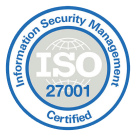
Whether they automate agent workflows, improve call performance, or give increased insight into overall call center operations, call center features ultimately contribute to three vital aspects of your business: customer satisfaction, agent efficiency, and revenue generation.
Discover the best call center phone system features to maximize your company’s performance in 2025. Secure your position as a market leader across all facets of your operations.
Key Takeaways:
- Call center features can be broadly divided into categories focusing on automating calling, streamlining repetitive tasks, and evaluating agent and company performance.
- AI is becoming a vital part of many industry-leading call center software features, helping to augment efforts with automation and better data insights.
- Start by assessing your business goals and identifying the features that align with them. Consider factors like automation needs, analytics capabilities, and scalability to ensure the solution you select enhances your internal processes effectively.
25 Essential Call Center Features for 2025
From smarter automation to advanced analytics, this list reflects the must-have call center features businesses need to enhance communication, boost efficiency, and deliver exceptional service.
Get ready to explore the tools that will shape the future of call center operations.
1. Generative AI Integration
What is Generative AI:
Generative AI automates post-call processes by summarizing conversations, identifying key details, and automating follow-ups. When agents finish a call, the system provides an instant summary, ensuring no critical information is overlooked.
Why it’s important:
Customer service demands are increasing, and agents need tools to work more efficiently. By 2025, 80% of customer service organizations will use generative AI to enhance productivity and customer experiences. Automating after-call tasks saves agents time, allowing them to focus on complex issues and ensuring faster service delivery.
Discover the Future of Conversations
2. International Numbers
What are International Numbers:
This feature provides businesses with access to virtual phone numbers from most countries, enabling them to establish a local presence globally. For example, a U.S.-based company can use an Australian number to seamlessly connect with customers in Sydney, fostering trust and accessibility.
Why it’s important:
Expanding into international markets requires a way to communicate effectively with local customers. International Numbers eliminate the need for costly physical offices while making it easy for customers to reach businesses in their local area codes.
3. Auto Dialer
What is an Auto Dialer:
Auto Dialers automate outbound calling by dialing numbers from a predefined list, connecting agents only to answered calls. For instance, a sales team can use the auto-dialer to efficiently contact a large number of leads, skipping unanswered or disconnected calls. Integrated with call center CRM features, they ensure seamless workflows and efficient lead management.
Why it’s important:
Automation improves agent efficiency and reduces idle time, allowing them to focus on meaningful customer interactions. By eliminating manual dialing, teams can significantly increase their call volumes and close more deals.
4. Speech and Sentiment Analysis
What is Speech and Sentiment Analysis:
Speech and sentiment analytics evaluate tone and emotion during conversations, guiding agents to respond empathetically. If a customer sounds frustrated, the system can alert the agent to adapt their approach, ensuring a more effective interaction.
Why it’s important:
Understanding customer emotions is essential for meaningful interactions. Businesses using sentiment analytics have reported a 20-30% reduction in churn rate. This feature ensures customers feel heard and valued, reinforcing trust and loyalty through personalized communication.
5. Power Dialer
What is a Power Dialer:
The Power Dialer automatically dials multiple numbers simultaneously, ensuring agents spend more time talking and less time waiting. For example, a customer support team can quickly follow up on service requests without manually managing the call list. As part of advanced contact center capabilities, it helps streamline workflows for better efficiency.
Why it’s important:
It maximizes efficiency by dialing multiple numbers at once, connecting agents only to answered calls. This saves valuable time and improves productivity, especially in high-pressure environments.
6. Conversational AI
What is Conversational AI:
Conversational AI uses natural language processing to handle routine inquiries without human intervention. Imagine a chatbot answering a customer’s question about their account balance instantly.
Why it’s important:
This technology enhances accessibility by providing 24/7 support. By 2026, conversational AI is expected to handle 20% of all customer interactions, reducing agent workload and improving efficiency.
See It Yourself – Just One Click Away
7. Interactive Voice Response (IVR)
What is Interactive Voice Response (IVR):
IVR systems let customers navigate menus using voice or keypad inputs to resolve issues or be directed to the right department. For example, “Press one for sales, two for support” is IVR in action. As a staple of contact center features, IVR improves navigation and reduces response times.
Why it’s important:
IVR can automate tasks that would otherwise cost businesses 7 times more via an agent. It also ensures customers get quick answers to frequently asked questions.
8. Softphone
What is a Softphone:
A Softphone is a software-based phone system that allows agents to make and receive calls using their computers or mobile devices. For instance, a remote support agent can handle customer queries seamlessly through their laptop. It’s a standout among SMB call center features, offering flexibility for businesses with limited infrastructure.
Why it’s important:
Softphones provide flexibility and scalability, enabling businesses to support remote or hybrid teams effectively. They reduce hardware costs while offering all the functionality of traditional phones.
9. Cloud-Based Solutions
What are Cloud-Based Solutions:
Cloud-based solutions provide remote management capabilities, allowing businesses to operate call centers without relying on physical infrastructure. It’s the difference between needing a server room and accessing your system through a browser. These cloud call center features are ideal for scaling operations flexibly and efficiently.
Why it’s important:
Cloud solutions reduce operational costs by up to 20%, offering flexibility and scalability. They’re ideal for businesses with remote teams or those planning to expand without logistical constraints.
10. VoIP
What is VoIP:
VoIP (Voice over Internet Protocol) enables voice communication over the internet, replacing traditional phone lines. For instance, a global sales team can make international calls without incurring hefty charges.
Why it’s important:
VoIP systems are cost-effective, scalable, and feature-rich, making them ideal for modern businesses. They support remote work environments and offer advanced functionalities like call recording and analytics.
Ready To Start Using VoIP?
11. Real-Time Monitoring
What is Real-Time Monitoring:
Real-time monitoring allows supervisors to observe active calls, providing immediate feedback to agents and ensuring service quality. For example, a manager can listen in on a live call and offer guidance through a private chat. It’s one of the key features of call center solutions that ensures consistent customer experiences.
Why it’s important:
Monitoring conversations as they happen ensures that any issues are resolved promptly, preventing escalation. Supervisors using real-time monitoring have reported a 30% improvement in agent performance over time.
12. Toll-Free Numbers
What are Toll-Free Numbers:
Toll-Free Numbers allow businesses to provide a free calling option for their customers. For example, a customer service center can offer a toll-free line to encourage inquiries without passing on call costs to customers.
Why it’s important:
Toll-free numbers make it easier for customers to reach businesses, improving accessibility and customer satisfaction. They also lend credibility and professionalism to the organization.technological evolution.
13. Wallboard
What is a Wallboard:
This feature provides a real-time visual overview of call center performance metrics on a single screen. Managers and teams can track KPIs such as call volume, wait times, and agent availability at a glance. It’s a key component of any contact center features list, offering managers actionable insights to optimize performance.
Why it’s important:
Transparency and real-time data are crucial for maintaining call center efficiency. The Wallboard empowers teams to make informed decisions quickly, improving response times and overall operational performance.
14. Customer Details
What are Customer Details:
This feature provides agents with instant access to detailed customer profiles during calls. Including essential information such as past interactions, call history, and preferences, ensuring every interaction is personalized and efficient.
Why it’s important:
Customer satisfaction hinges on personalization and efficiency. Equipping agents with comprehensive customer data in real time allows for tailored interactions that build trust and loyalty. Customers appreciate not having to repeat themselves, and agents can address concerns more effectively.
15. Enhanced Security Features
What are Enhanced Security Features:
Enhanced security features protect sensitive data with encryption, single sign-on, and compliance with industry regulations like GDPR.
Why it’s important:
Data breaches are costly and damage customer trust. Investing in software with robust security from the start will make your customers feel safe and it will prevent many headaches later on.
Start Having Safer Conversations
16. Multi-channel Communication
What is Multi-channel Communication:
Multi-channel communication connects all customer interaction channels into a single platform, ensuring seamless transitions between them. For instance, a customer can start a chat and continue the same query over email without repeating details.
Why it’s important:
Customers expect consistent experiences across all platforms. Multi-channel systems improve engagement rates by up to 160% for businesses using two or more channels.
17. Smart Dialer
What is a Smart Dialer:
The Smart Dialer enhances outbound calling by automatically compiling contact lists and dialing numbers with a single click. Sales teams can use this feature to streamline prospect outreach without switching between tools.
Why it’s important:
By simplifying the dialing process, the Smart Dialer saves time and ensures agents can focus on building relationships. It also reduces errors associated with manual dialing, improving overall efficiency.
18. Preferred Agent
What are Preferred Agents:
The Preferred Agent feature ensures customers are connected to the same agent they previously interacted with, fostering stronger relationships and continuity. For example, a returning customer seeking an update on a past query can seamlessly reconnect with the agent already familiar with their case.
Why it’s important:
Consistency is key to building trust and loyalty. By maintaining continuity in customer-agent interactions, businesses can reduce onboarding time for repeat queries and enhance overall customer satisfaction.
19. Call Tagging
What is Call Tagging:
Call Tagging enables agents to categorize calls with relevant labels, such as “Support Request” or “Sales Lead.” For example, after a sales call, an agent can tag it for follow-up in the CRM. As part of call center QA software features, it improves tracking and enhances quality assurance efforts.
Why it’s important:
Organized call tagging simplifies tracking and managing interactions. It ensures agents and supervisors can quickly access relevant calls for training, analysis, or follow-up, enhancing overall call center productivity.
20. Call Transcription
What are Call Transcriptions:
This feature transcribes ongoing calls, enabling agents and supervisors to review conversations. For example, supervisors can use transcriptions during monitoring to guide agents more effectively.
Why it’s important:
Transcriptions save time by providing instant documentation of customer interactions. They improve agent performance through immediate feedback and ensure accurate records for compliance purposes.
The Only Way To Know For Sure Is Trying
21. Warm Transfers
What are Warm Transfers:
Warm Transfer allows agents to transfer calls with context, ensuring the next agent has all the information they need. For example, before transferring a billing query, the current agent can brief the next agent on the issue.
Why it’s important:
This feature prevents customers from repeating themselves, leading to faster resolutions and a better experience. It enhances collaboration between agents, making transitions seamless.
22. Mobile App
What is a Mobile App:
Mobile functionality enables agents to handle calls and manage tasks from anywhere using smartphones or tablets. For example, an agent can answer a customer inquiry during an off-site meeting.
Why it’s important:
As hybrid work environments become the norm, mobile tools ensure agents stay productive regardless of location. Businesses report a 15% improvement in operational efficiency by adopting mobile-enabled workflows.
23. Advanced Analytics
What are Advanced Analytics:
Advanced analytics provides real-time insights into call patterns, agent performance, and customer behavior. A live dashboard might highlight peak call times or track individual agent performance, helping managers optimize workflows.
Why it’s important:
Data drives better decisions. Leveraging advanced analytics can reduce average handling time by up to 40%. Advanced analytics helps businesses identify trends, refine strategies, and enhance service quality.
24. Call Flow Designer
What is a Call Flow Designer:
Call Flow Designer allows businesses to create customized call workflows to ensure that every customer interaction is handled efficiently. For example, incoming calls can be routed through a menu system, followed by a queue or specific department based on predefined rules. It’s an essential part of any call center features list, enabling businesses to optimize their operations.
Why it’s important:
A tailored call flow ensures customers reach the right agents without unnecessary delays, reducing frustration and improving satisfaction. Businesses can use these workflows to automate repetitive tasks and provide a seamless experience.
25. Topics Extraction
What is Topics Extraction:
This feature automatically identifies and categorizes key themes from customer conversations. For example, if multiple customers mention delayed deliveries in their calls, the system tags “delayed delivery” as a trending topic, helping businesses spot recurring issues quickly.
Why it’s important:
Understanding customer concerns at scale can transform how businesses prioritize and solve problems. Topics Extraction not only highlights the most pressing issues but also supports data-driven decision-making.
CloudTalk: Your Gateway to Advanced Call Center Functionality
Selecting the right call center features is the foundation for delivering exceptional customer experiences, and driving growth. From cutting-edge AI integrations to powerful tools like Smart Dialers and Call Flow Designers, CloudTalk offers a comprehensive solution tailored to businesses of all sizes.
Empower your team with tools that improve productivity, and enhance customer satisfaction. With CloudTalk’s advanced features, your business is ready to tackle challenges head-on while creating meaningful customer connections.
We’ve Got Your Back – Enjoy 50% Off Month One!
Customer Review:
What do you like best about CloudTalk?
The easiest phone system I have used, the AI notes are fantastic! I use cloud talk daily for work and would reccoment it to anyone easily integrated around the office and the impletion. Customer support easy to speak to and the ease of implemation is 10/10.
See What We Can Do Together

















